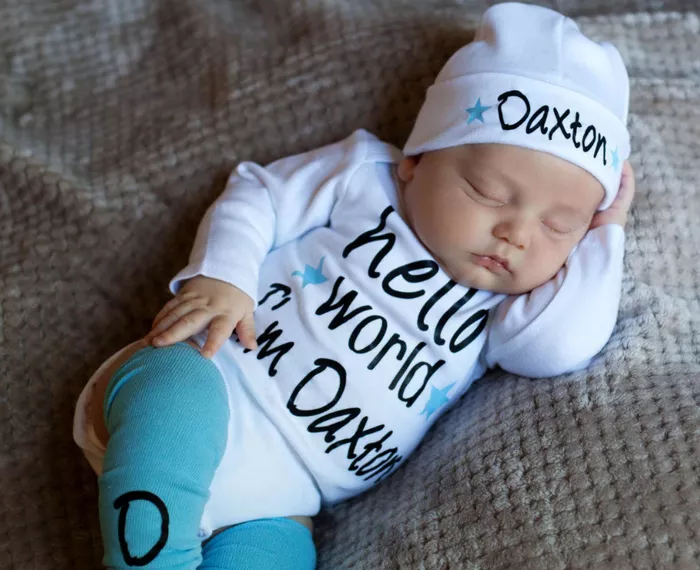Dressing your newborn is not just about fashion—it’s about ensuring their comfort, safety, and well-being. With their delicate skin and developing bodies, choosing the right clothing can make a significant difference in how they feel and thrive. This comprehensive guide explores everything you need to know about selecting the best clothes for your newborn, from essential types of clothing to fabric choices, safety considerations, seasonal adjustments, and more.
Welcoming a newborn into your family is a joyous occasion, accompanied by the responsibility of providing them with the best care, including their clothing choices. Understanding the basics of newborn clothing can help you navigate this exciting yet challenging aspect of parenting with confidence and ease.
Importance of Choosing the Right Clothes
Selecting appropriate clothing for your newborn is not just about aesthetics—it directly impacts their comfort, temperature regulation, and skin health. Here’s why it’s crucial to choose wisely:
1. Comfort and Softness: Newborns have sensitive skin that is prone to irritation. Soft, breathable fabrics like cotton and bamboo help minimize discomfort and allow their skin to breathe.
2. Temperature Regulation: Babies have difficulty regulating their body temperature, making it essential to choose clothing that keeps them warm without overheating or causing them to become too cold.
3. Safety and Practicality: Features such as easy-access snaps or zippers for diaper changes and clothing that fits properly without being too tight are practical considerations that simplify daily care routines.
Essential Types of Newborn Clothing
Building a versatile wardrobe for your newborn involves selecting key pieces that meet their everyday needs while considering factors like ease of dressing, comfort, and style. Here are the essential types of newborn clothing:
1. Onesies and Bodysuits: These are foundational pieces that provide a comfortable base layer, ideal for daywear and sleepwear. They often feature snap closures for easy diaper changes.
2. Sleepers and Pajamas: Soft, cozy sleepwear designed for nighttime and naptime, ensuring warmth and comfort while allowing freedom of movement.
3. Socks and Booties: Keep your baby’s feet warm and protected with soft, snug-fitting socks or booties, particularly in colder weather.
4. Hats and Mittens: Essential for regulating your newborn’s body temperature, hats keep their heads warm, while mittens prevent them from scratching themselves.
5. Swaddles and Sleep Sacks: These mimic the feeling of being in the womb, providing comfort and security while promoting better sleep patterns.
Choosing the Right Fabrics
The fabric choice for newborn clothing is crucial, as it directly affects their comfort and skin health. Here are some recommended fabrics:
Cotton: Known for its softness and breathability, cotton is gentle on sensitive skin. Organic cotton is free from harmful chemicals, making it an excellent choice for newborns.
Bamboo: Naturally hypoallergenic and moisture-wicking, bamboo fabric is exceptionally soft and ideal for babies with sensitive skin.
Merino Wool: Provides warmth without overheating and has natural antibacterial properties, making it suitable for cooler climates.
Avoid Synthetic Fabrics: Polyester and nylon can be less breathable and may cause skin irritation in some babies, so it’s best to prioritize natural fibers.
See Also: Can You Use Desitin on Newborns: A Comprehensive Guide
Safety Considerations
When dressing your newborn, safety should always be a top priority. Here are essential safety tips to keep in mind:
Avoid Loose Accessories: Opt for clothes without loose strings, ribbons, or small embellishments that could pose a choking hazard.
Check for Comfort: Ensure that seams are smooth and tags are not scratchy to prevent discomfort and skin irritation.
Proper Fit: Clothes should fit snugly but comfortably, allowing your baby to move freely without restriction.
Seasonal Considerations
Adapting your newborn’s wardrobe to the seasons ensures their comfort and well-being throughout the year:
Summer: Lightweight, breathable fabrics like cotton and bamboo help keep your baby cool. Dress in layers for easy adjustment to changing temperatures.
Winter: Layering is key in colder months. Use hats, mittens, and blankets to keep your baby warm when venturing outdoors, and opt for thicker fabrics like fleece or merino wool.
Conclusion
Choosing the best clothes for your newborn involves more than just picking out cute outfits—it’s about understanding their needs for comfort, safety, and practicality. By selecting soft, breathable fabrics and essential clothing items tailored to their age and climate, you can ensure your baby remains cozy and content from their first days onward. Armed with these guidelines, you can confidently navigate the world of newborn fashion, ensuring your little one is stylishly and comfortably dressed for every occasion.
Additional Tips and Resources
Washing and Care: Guidance on washing newborn clothes to maintain softness and cleanliness without irritating sensitive skin.
Special Occasions: Tips for dressing your newborn for family gatherings, outings, and photo sessions.
Online Shopping Tips: Advice for shopping online for newborn clothes, including sizing charts and return policies to make the process smoother for parents.
With these insights and practical tips, you can build a newborn wardrobe that not only meets your baby’s needs but also enhances their comfort and enjoyment as they explore their new world.


